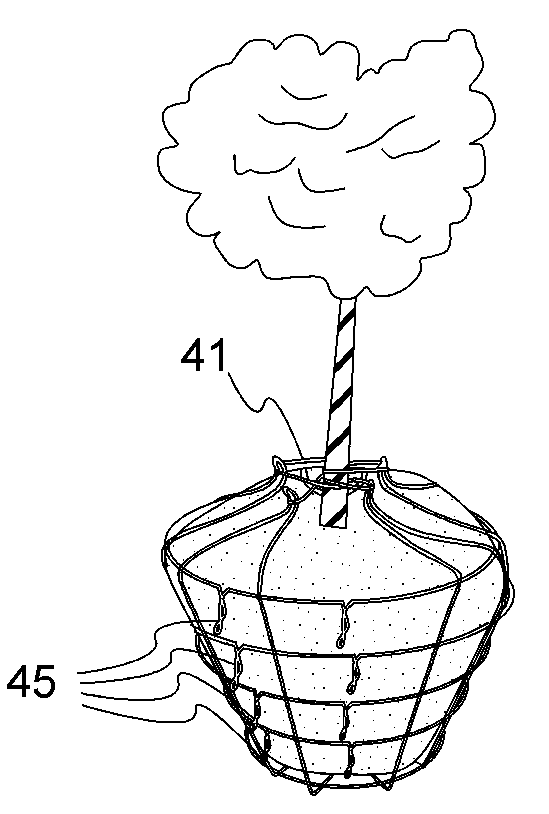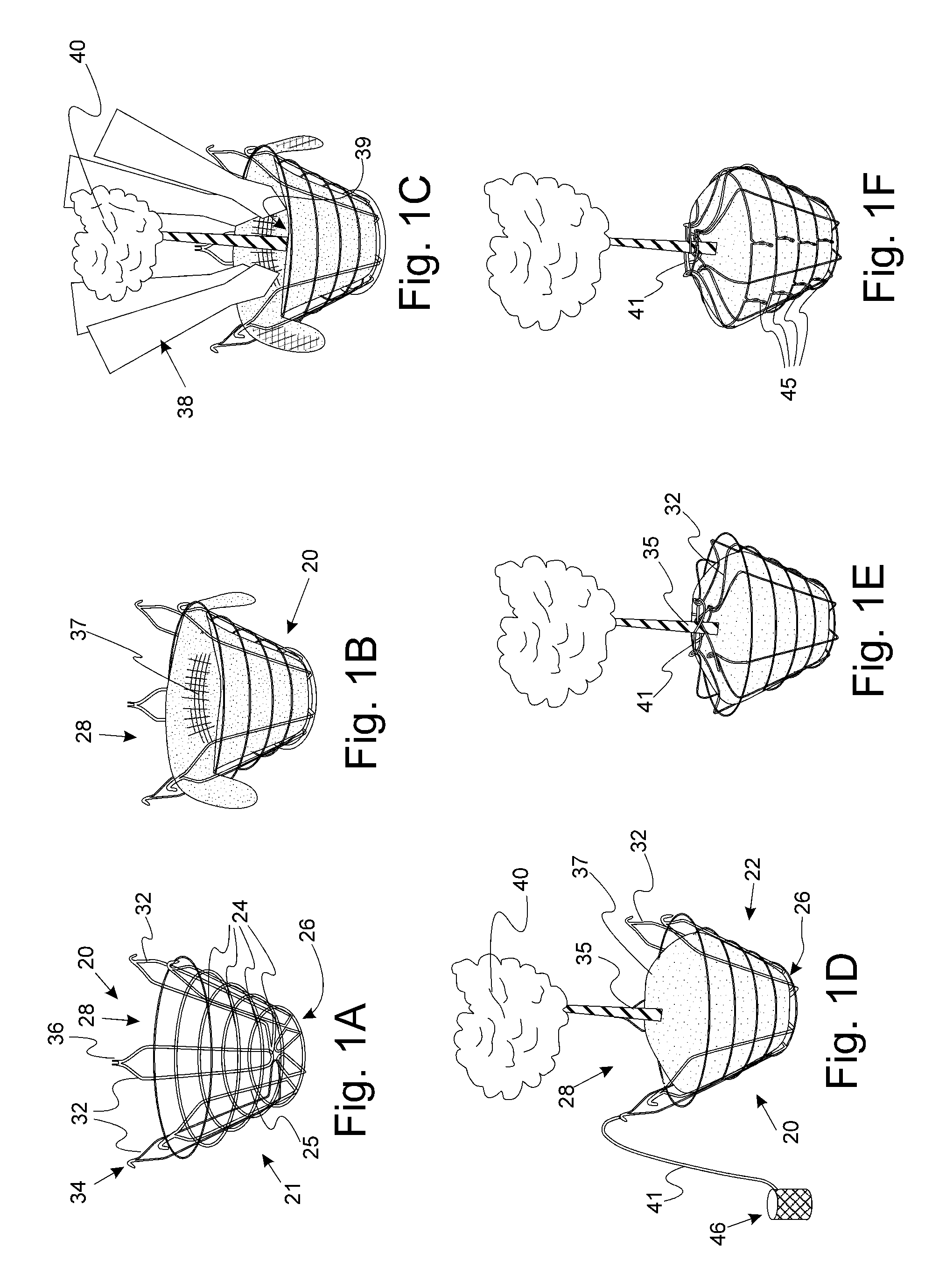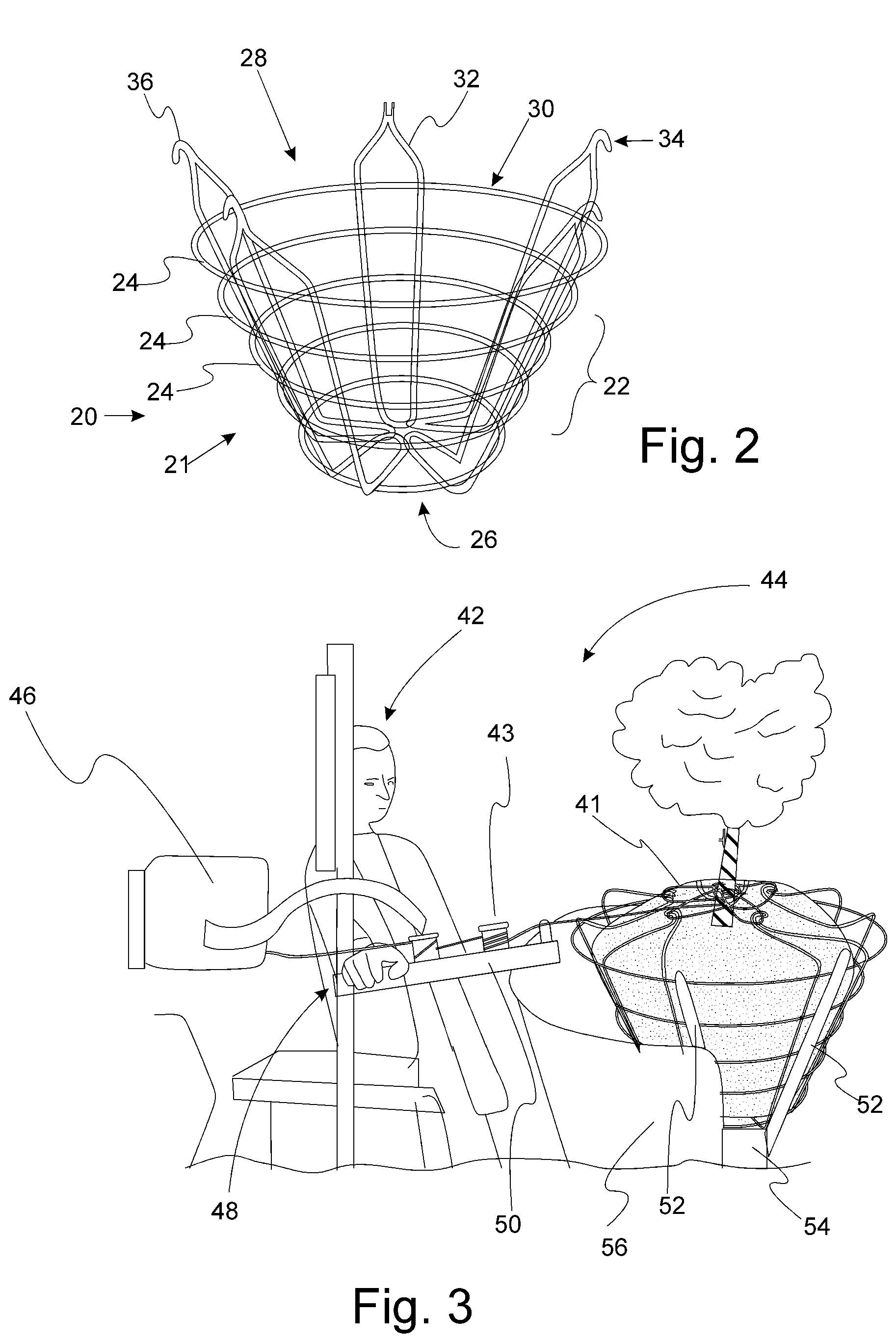Tree Balling Method, System, and Wire Basket Used Therein
a technology of wire baskets and branches, applied in the direction of threaded fasteners, bolts, planting, etc., can solve the problems of insufficient, inconvenient, and inability to protect and keep the root system and earth ball intact of the plant during the relocation, and achieve the effect of promoting transplantation success, maneuverability and flexibility
- Summary
- Abstract
- Description
- Claims
- Application Information
AI Technical Summary
Benefits of technology
Problems solved by technology
Method used
Image
Examples
Embodiment Construction
)
[0025]As required, detailed embodiments of the present invention are disclosed herein; however, it is to be understood that the disclosed embodiments are merely exemplary of the invention that may be embodied in various and alternative forms. The figures are not necessarily to scale; some features may be exaggerated or minimized to show details of particular components. Therefore, specific structural and functional details disclosed herein are not to be interpreted as limiting, but merely as a representative basis for the claims and / or as a representative basis for teaching one skilled in the art to utilize the present invention.
[0026]Referring to FIGS. 1A and 2, a wire basket 20 is formed from an open wire mesh 21. The wire basket 20 includes a bottom 26, a tapered sidewall 22 made from conically oriented horizontal wires 24 joined with a number of vertical wire loops 25, an open top 28, and a rim 30 located at the open top 28 comprising at least one of the conically oriented hori...
PUM
| Property | Measurement | Unit |
|---|---|---|
| flexible | aaaaa | aaaaa |
| size | aaaaa | aaaaa |
| movement | aaaaa | aaaaa |
Abstract
Description
Claims
Application Information
 Login to View More
Login to View More - R&D
- Intellectual Property
- Life Sciences
- Materials
- Tech Scout
- Unparalleled Data Quality
- Higher Quality Content
- 60% Fewer Hallucinations
Browse by: Latest US Patents, China's latest patents, Technical Efficacy Thesaurus, Application Domain, Technology Topic, Popular Technical Reports.
© 2025 PatSnap. All rights reserved.Legal|Privacy policy|Modern Slavery Act Transparency Statement|Sitemap|About US| Contact US: help@patsnap.com



